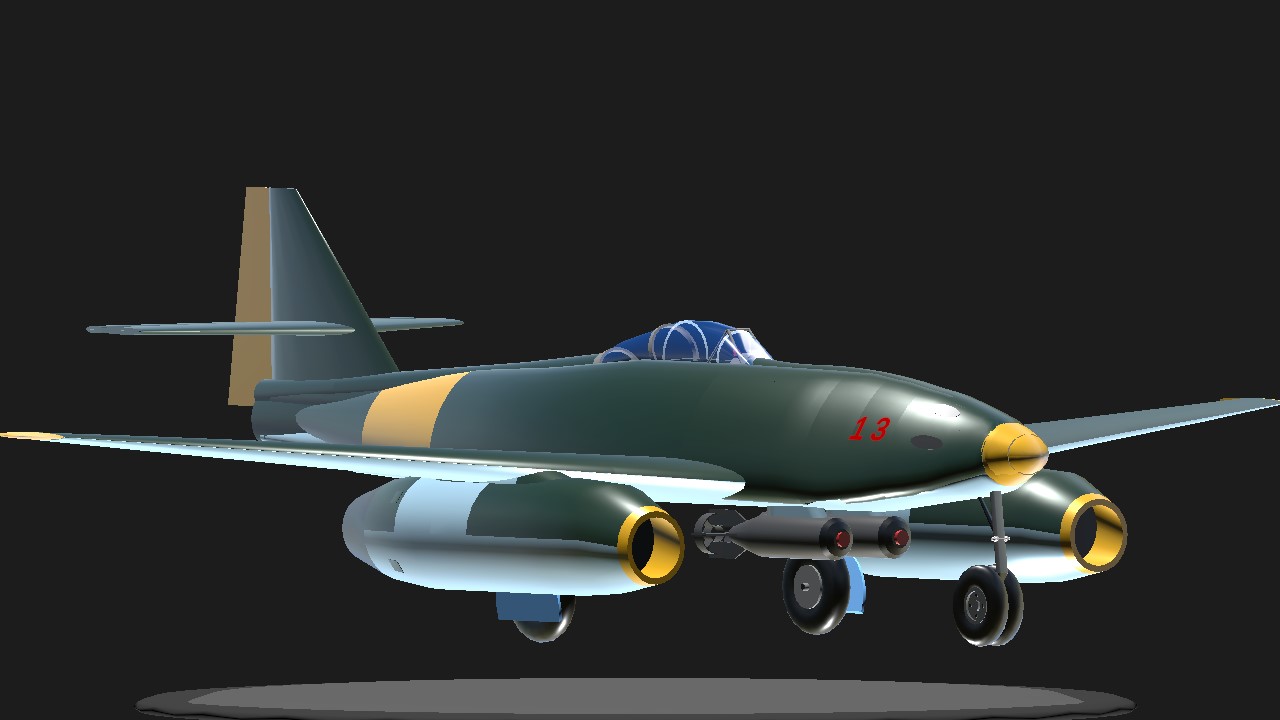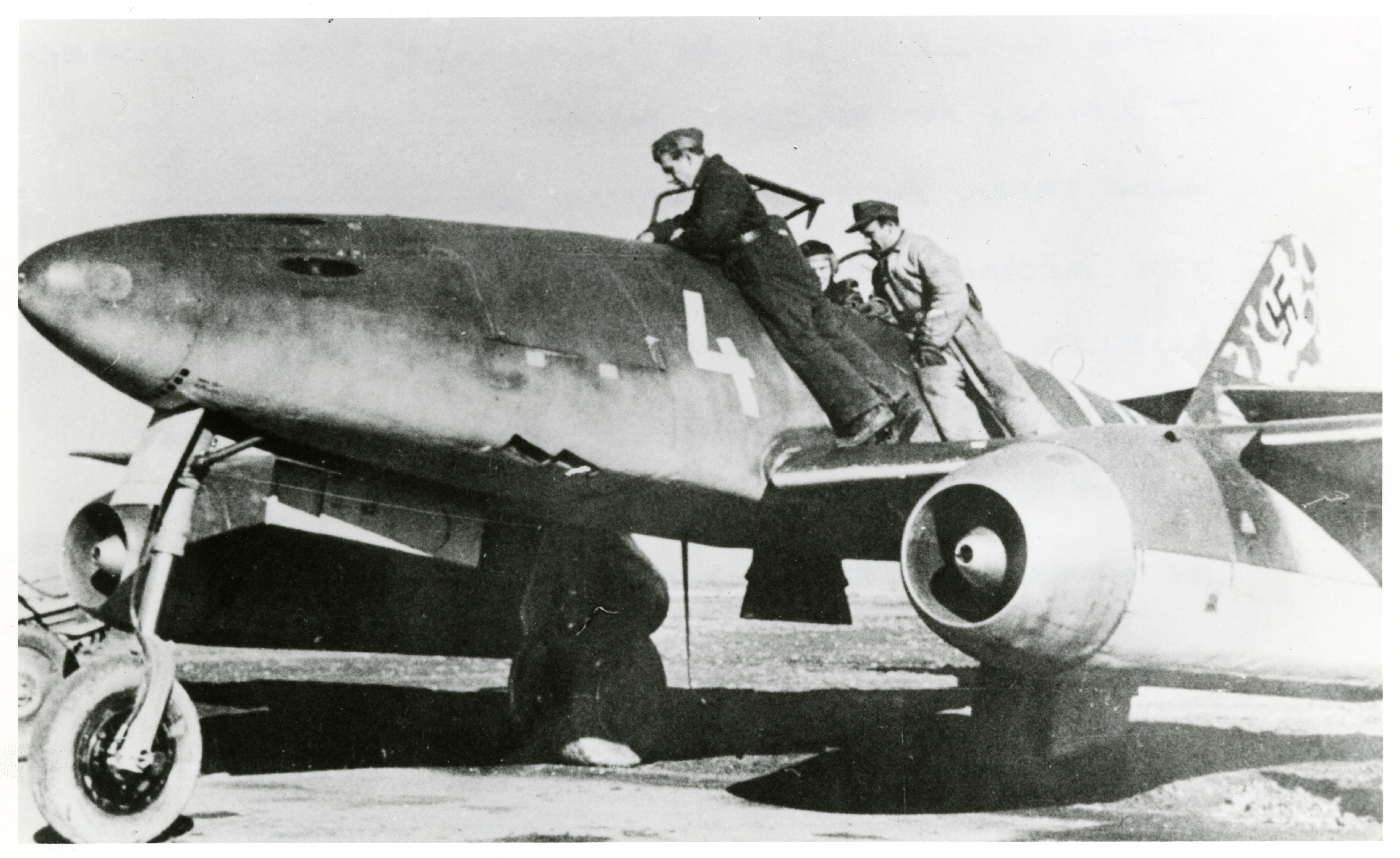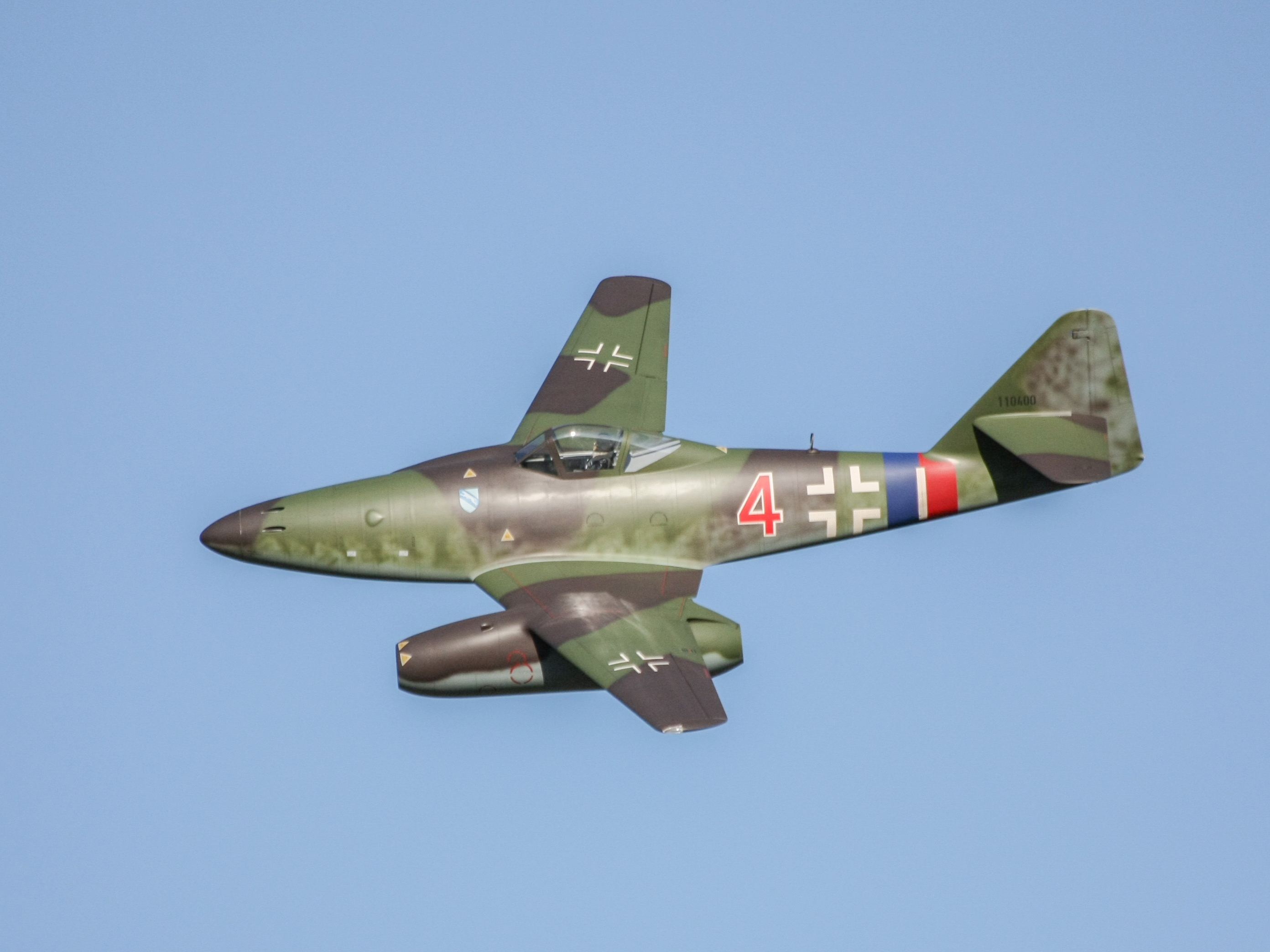Me 262 Engine - The Messerschmitt Me 262, nicknamed Schwalbe (German: "Swallow") in fighter versions or Sturmvogel (German: "Storm Bird") in fighter-bomber versions, is a German-designed and manufactured fighter and fighter-bomber. Aircraft manufacturer Messerschmitt. It was the world's first operational jet fighter.
Initial design of the Me 262 began in April 1939, before the outbreak of World War II. When the aircraft completed its service flight on 18 April 1941, it was using a piston engine instead of a jet engine; Only on July 18, 1942, the first jet flight took place. Progress on the project was hampered by demons, metallurgy and the interference of high-ranking figures such as Hermann Göring and Adolf Hitler, the head of the Luftwaffe. The latter preferred to operate the Me 262 as a ground attack/bomber rather than a defensive interceptor, necessitating a redesign. Accordingly, the aircraft finally entered operational status with the Luftwaffe in mid-1944. In its operational configuration, the Me 262 was faster and more heavily armed than any Allied fighter, including the British jet-powered Gloster Meteor.
Me 262 Engine

The Allies countered its effectiveness by frequently attacking the aircraft in the air while on the ground, during takeoff and landing.
Messerschmitt Me 262 Luftwaffe World War Ii Jet Fighter Aircraft Editorial Image
The roles of the Me 262 included light bomber, scout and experimental night fighter. The Me 262 proved to be an effective fighter against Allied fighters; German pilots claimed to have shot down 542 Allied aircraft.
Operations were plagued by reliability problems, mainly due to widespread strategic materiel shortages, as well as design compromises in the Junkers Jumo 004 axial-flow turbojet systems that powered it. Allied attacks on fuel supplies during the last war's worsening situation also reduced the Me 262's effectiveness as a fighting force. Armamt production in Germany was focused on more easily produced aircraft.
In d, the Me 262 had little effect on the course of the war due to its late introduction and therefore the small number in operational service.
Although German use of the Me 262 ended with the end of World War II, a small number were operated by the Czechoslovak Air Force until 1951. Also, Israel was probably counted as one of the few (two to eight) users from Me. 262s were allegedly built and secretly supplied by Avia, although there is no official confirmation of such use.
Bmw Jet Engine ( Me 262 )_bmw Museum Munich
It also greatly influenced several designs such as the Sukhoi Su-9 (1946) and the Nakajima Kikka. Many captured Me 262s were studied and flight tested by major powers, eventually influencing the design of post-war aircraft such as the North American F-86 Sabre, MiG-15 and Boeing B-47 Stratojet.
Several aircraft survive on static display in museums, and many privately assembled flying reproductions have also been created; These are usually equipped with modern Geral Electric CJ610 generators.
A few years before World War II, the Germans predicted great potential for jet-powered aircraft built by Hans von Ohne in 1936.

After the successful test flight of the Heinkel He 178, the world's first jet aircraft, a week after the invasion of Poland, which started the conflict, they received the jet demon for their advanced fighter aircraft. As a result, the Me 262 was already under development as Projekt 1065 (P.1065) before the war. The project originated from a request from the Reichsluftfahrtministerium (RLM, Ministry of Aviation) for a jet aircraft with an endurance of one hour and a speed of at least 850 km/h (530 mph; 460 kn).
Me 262 A 1a
Preliminary plans were drawn up in April 1939, and when presented in June 1939, the original design was very different from the aircraft that would eventually enter service. In particular, it depicts demons mounted on wings,
Progress on the original design was significantly delayed by technical problems with the new jet engine. Because the gins were slow to arrive, Messerschmitt moved the gins from the wing roots to the lower wings, making them easier to replace when needed. This has proven to be important for both accessibility and retention.
As the BMW 003 aircraft proved to be heavier than expected, the wing was swept slightly, 18.5°, to accommodate the CER change.
The Jet Jean program was hampered by a lack of funding, primarily due to the prevailing attitude among senior officials that the conflict could be easily won with conventional aircraft.
The Me 262 Project
Among them was Luftwaffe chief Hermann Göring, who in February 1940 (a month before the first wooden model was finished) reduced the Jin development program to just 35 Jins.
Aeronautics Willy Messerschmitt attempted to continue mass production of the piston-powered, 1935 Bf 109 and projected Me 209.
Major Gerald Adolph Galland supported Messerschmitt in the early years of development, flying the Me 262 himself on 22 April 1943. One particularly acute problem was the lack of an alloy with a high melting point at difficult temperatures, a problem that was not adequately resolved during the war.

After a double-firing November 1941 flight (with BMW 003s), the aircraft made its first successful flight on 18 July 1942 with jet power piloted by a pair of Jumo 004 Demons.
Me 262 C1 Single Engine Kit
Ludwig Bolkov was the chief aerodynamicist assigned to work on the design of the Me 262. He originally designed a wing using NACA airfoils with a modified elliptical nose section.
Later in the design process, they were changed to AVL derivatives of NACA airfoils, using NACA 00011-0.825-35 in the root and NACA 00009-1.1-40 in the tail.
Elliptical nose derivatives of NACA wings were used on the horizontal and vertical tail surfaces. The wings were of single cantilever construction, with tension skins 3 mm (0.12 in) skin thick at the root and 1 mm (0.039 in) at the tip.
At the end of the war, in order to speed up construction, save weight and use less strategic material, the inside of the wings were not painted.
Myths You Shouldn't Believe About The Messerschmitt 262
The wings are attached to the fuselage at four points using 20 mm (0.79 in) and forty-two 8 mm (0.31 in) bolts.
The high-speed, light-carrying Schnellbomber ("fast bomber") configuration was intended to penetrate Amen's airspace during the impending Allied invasion of France. His decree led to the development (and contract) of the Sturmvogel variant. Hitler's intervention helped delay Schwalbe's launch;
Albert Speer, the Minister of Armaments and Military Production, claimed in his memoirs that Hitler blocked mass production of the Me 262 before an agreement was reached in early 1944. A similar criticism was voiced by Leyant Gerald Adolphe Galland.

Hitler rejected arguments that the aircraft would be more effective against the Allied bombers that were destroying much of Germany and wanted it as a bomber for raids. According to Speer, Hitler felt that his superior speed compared to other fighters of the era meant that he could not be attacked, so he preferred to fly level at high altitudes.
Jumo 109 Jet Engine
The Me 262 is often referred to as a "swept wing" design because the production aircraft had a small but significant leading sweep of 18.5°, which was believed to have the advantage of increasing the critical Mach number.
The sweep, which was rare at the time, was added after the original design of the aircraft. The cleaners were heavier than originally expected and clearance was added primarily to ensure proper placement of the lift zone relative to the mass squared. (The original 35° sweep proposed by Adolphe Buseman was not adopted.)
On 1 March 1940, instead of moving the wing back on the strut, the outer wing was moved slightly aft; The trailing edge of the middle part of the wing was left unrefined.
According to data from AVA Götting and wind tunnel results, during volume production from the sixth prototype "V6", the leading edge of the inner section (between the nose and wing root) was then moved to the same angle as the outer panels.
File:engine Me 262.jpg
Tests showed that the Me 262 was far superior to earlier fighters such as the Bf 109 or Fw 190. Handling was so improved over the previous aircraft that Major Ernst Glander stated that any Bf 109 pilot could fly the Me 262. Just an hour of instruction. According to his report, EU bomber pilots flying the Me 262 required only three instruction flights and less than 5% had trouble retraining. The Me 262 had high stall and high landing characteristics compared to earlier German fighters. His handling improved rapidly and he lost less speed during cornering. It had a top speed of 465 mph, which was higher than the top speed of most fighters of the day. It also looked better in all directions than earlier German fighters. When a demon was lost due to lack of engine torque, the aircraft was easily controlled and landed without problems. Its only significant drawback was the inability to use the brakes
Sig p365 tulster holster, sig p365 iwb holster, sig holsters p365, sig p365 sas holster, sig p365 xl holster, sig p365 hybrid holster, appendix holster sig p365, safariland holster sig p365, sig p365 belt holster, sig p365 holster, sig p365 purse holster, sig sauer p365 holster
0 Comments